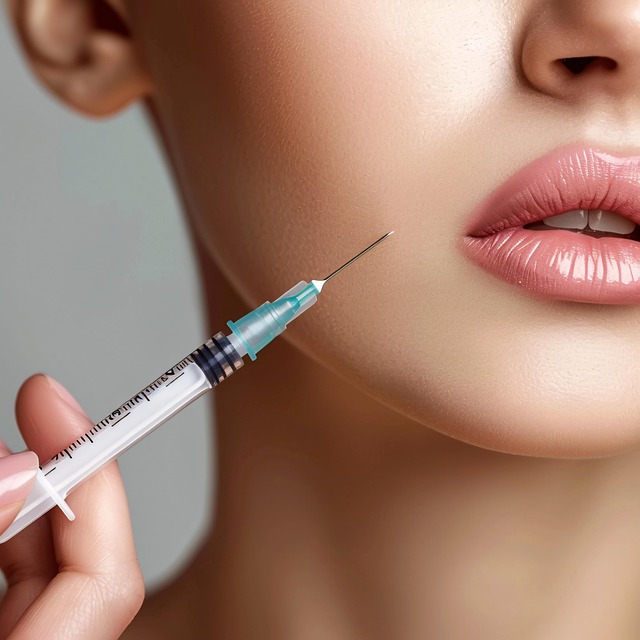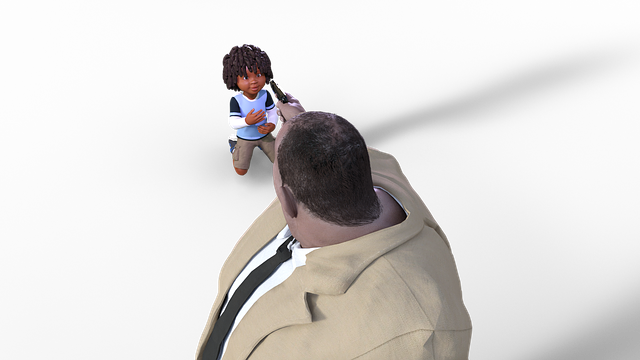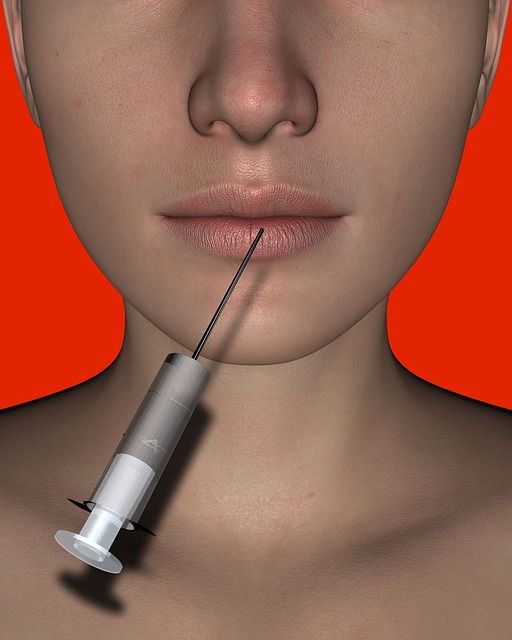This text compares Botox and dermal fillers as cosmetic treatments for forehead wrinkles. Botox, derived from botulinum toxin, relaxes muscles to prevent dynamic wrinkles, offering a subtle, natural-looking improvement with minimal recovery time. In contrast, dermal fillers instantly plump lines but may have more noticeable results and higher side effect risks. The choice between them depends on individual preferences, desired longevity of the solution, and potential side effects. Botox is ideal for minimal intervention with significant anti-aging benefits, while dermal fillers provide immediate volume enhancement. Both procedures require qualified professionals for safety and effectiveness.
“Consider getting rid of forehead lines without the usual pain? Botulinum toxin, commonly known as Botox, offers a painless solution. This article navigates your journey towards a smooth forehead. We’ll explore the science behind Botox, its advantages over dermal fillers, and a step-by-step guide to the procedure. From understanding the causes of wrinkles to recovering from treatment, we’ve got you covered. Learn how to choose a qualified provider and make an informed decision between Botox vs. dermal fillers for youthful-looking skin.”
Understanding Forehead Lines and Their Causes

Forehead lines, also known as frown lines or glabellar lines, are a common concern for many individuals who wish to maintain a youthful appearance. These vertical wrinkles between the eyebrows form due to various factors, primarily related to muscle movement and skin aging. Over time, repeated facial expressions, such as frowning or squinting, cause the muscles under the skin to contract and create these prominent lines. Additionally, environmental factors like sun exposure and aging contribute to the breakdown of collagen and elastin fibres, resulting in reduced skin elasticity and increased visibility of these lines.
When considering cosmetic treatments, individuals often ponder between Botox and dermal fillers as potential solutions. Botox, a neurotoxin, relaxes the muscles causing the lines, providing a temporary yet effective result. On the other hand, dermal fillers enhance the skin’s texture by adding volume to the depressed areas, offering a more long-lasting solution. Each treatment has its advantages and is chosen based on individual preferences and desired outcomes, with Botox being ideal for specific muscle-related lines while dermal fillers cater to deeper facial contours.
What is Botox? A Comprehensive Overview

Botox, short for botulinum toxin, is a protein produced by bacteria that has found its way into the realm of aesthetics and medical treatments. When injected into specific muscles, it blocks nerve signals, leading to the relaxation of those muscles. This action is what causes the well-known smoothing effect on facial lines and wrinkles, particularly around the eyes and forehead.
In comparison with dermal fillers, which add volume and enhance the skin’s texture, Botox offers a more subtle approach to anti-aging. It’s a popular choice for individuals seeking to reduce the appearance of fine lines and wrinkles without significant tissue augmentation. The procedure is minimally invasive, making it an attractive option for those who prefer not to undergo surgery or more extensive treatments like dermal fillers.
How Botox Works for Forehead Lines

Botox has emerged as a popular non-surgical treatment for reducing forehead lines and wrinkles, offering a painless alternative to traditional dermal fillers. Unlike fillers that add volume by injecting substances like hyaluronic acid into the skin, Botox works by relaxing the muscles responsible for creating dynamic wrinkles. By blocking nerve signals, Botox prevents the contraction of these muscles, thereby smoothing out expression lines and providing a more youthful appearance.
This procedure is particularly effective for targeting glabellar lines, the deep vertical creases that often form between the eyebrows. When administered by a skilled professional, Botox can provide long-lasting results, reducing the need for frequent treatments compared to fillers. Moreover, it offers a minimal recovery time and is considered safe with few side effects, making it a preferred choice for those seeking subtle yet effective anti-aging solutions over dermal fillers.
Benefits of Using Botox Over Dermal Fillers

When considering cosmetic treatments for forehead lines, many individuals ponder the choice between Botox and dermal fillers. Both offer effective ways to reduce the appearance of wrinkles, but they work differently. Botox, a neurotoxin derived from bacteria, relaxes muscles, preventing contraction that causes dynamic wrinkles, especially around the eyes and forehead. This results in a smoother, more youthful look without altering the skin’s volume or texture.
In contrast, dermal fillers, typically made of hyaluronic acid, plump and fill in lines and wrinkles by adding volume to the skin. While they provide immediate results, Botox offers a more subtle, natural-looking improvement over time. Moreover, Botox treatments generally have shorter recovery periods and lower risk of side effects compared to fillers, making it a preferable option for those seeking a minimally invasive approach.
The Procedure: Step-by-Step Guide to Painless Botox Injection

The Procedure: Step-by-Step Guide to Painless Botox Injection
Botox for forehead lines is a popular non-invasive cosmetic treatment, offering a straightforward alternative to dermal fillers. The process involves injecting a small amount of botulinum toxin into specific muscles responsible for facial expressions that contribute to the formation of wrinkles. Unlike dermal fillers, which add volume and smoothen out lines, Botox temporarily paralyzes these muscles, preventing them from contracting and causing creases in the skin. This results in a more youthful appearance by reducing dynamic wrinkles, particularly around the eyes and forehead.
The procedure begins with a thorough consultation to assess your facial structure and identify suitable injection sites. A qualified medical professional will clean the treatment area and apply a numbing cream for minimal discomfort. Using a fine needle, Botox is then precisely injected into targeted muscle groups. The entire process is quick, typically taking around 15-30 minutes, and patients experience only mild tingling or pinching sensations. Post-treatment care involves avoiding strenuous activities and certain medications to ensure optimal results, with effects usually visible within 24-72 hours, reaching their peak after about a week. When compared to dermal fillers, Botox offers a more subtle and natural result, making it an ideal choice for those seeking minimal intervention with significant anti-aging benefits.
Recovery and Results: What to Expect After Treatment

After your Painless Forehead Line Botox treatment, it’s normal to expect some minor redness and swelling, which typically subside within a few hours to a day. Unlike surgical procedures or dermal fillers, Botox recovery is swift and relatively painless. You can resume your daily activities immediately, although you might want to avoid strenuous exercise for the first 24 hours to reduce bruising.
The results of Botox are gradual, with peak effects usually visible around two weeks post-treatment. This is a significant advantage over dermal fillers, which offer instant but temporary results. With Botox, fine lines and wrinkles on your forehead will soften and lessen in appearance, providing a smoother, more youthful complexion for up to three to six months. Repeated treatments can maintain these results over time, making it a popular choice for those seeking long-lasting yet non-invasive solutions to facial aging.
Common Side Effects and Risks Associated with Botox

While Botox is a popular choice for forehead line reduction, it’s essential to be aware of its potential side effects and risks. Unlike dermal fillers, which can cause immediate swelling and bruising, Botox typically results in less visible changes but may still present some temporary discomfort. Common side effects include mild headaches, muscle weakness around the treatment area, and drooping eyelids or eyebrows—a condition known as ptosis. These effects usually subside within a few days to weeks.
Unlike dermal fillers that can shift over time, Botox offers a more subtle and natural-looking result. However, it’s crucial to remember that Botox is a protein that gradually breaks down in the body, requiring regular treatments for maintenance. The risks associated with Botox are generally low, but it’s essential to consult with a qualified professional who can assess your suitability and provide guidance on potential outcomes and aftercare.
Choosing the Right Provider: Tips for a Safe and Effective Procedure

When considering forehead line botox or any cosmetic procedure, choosing the right provider is paramount for a safe and effective outcome. It’s crucial to research and select an experienced professional with a proven track record in aesthetic treatments. Look for certifications from reputable organizations and check patient reviews to gauge their reputation. Remember, botox vs dermal fillers — both have their merits, but for forehead lines, botox offers a temporal, non-invasive solution that prevents muscle contraction, thereby reducing the appearance of wrinkles.
Ensure your provider conducts a thorough consultation, understands your goals, and provides personalized recommendations. They should also discuss potential side effects and aftercare, ensuring you’re well-informed throughout the process. A reputable practitioner will prioritize your comfort and satisfaction, making you feel at ease during what might otherwise be an intimidating experience.
